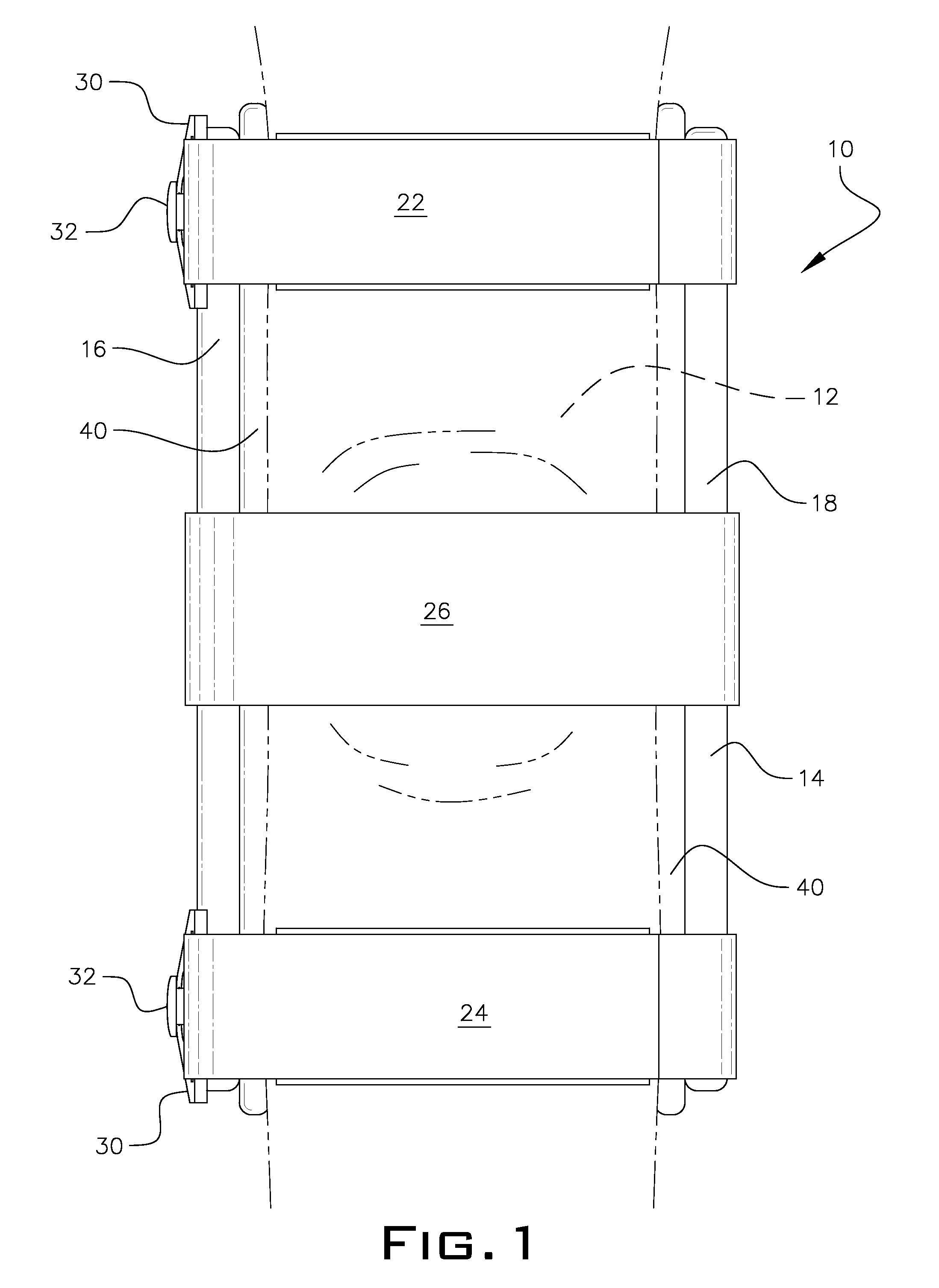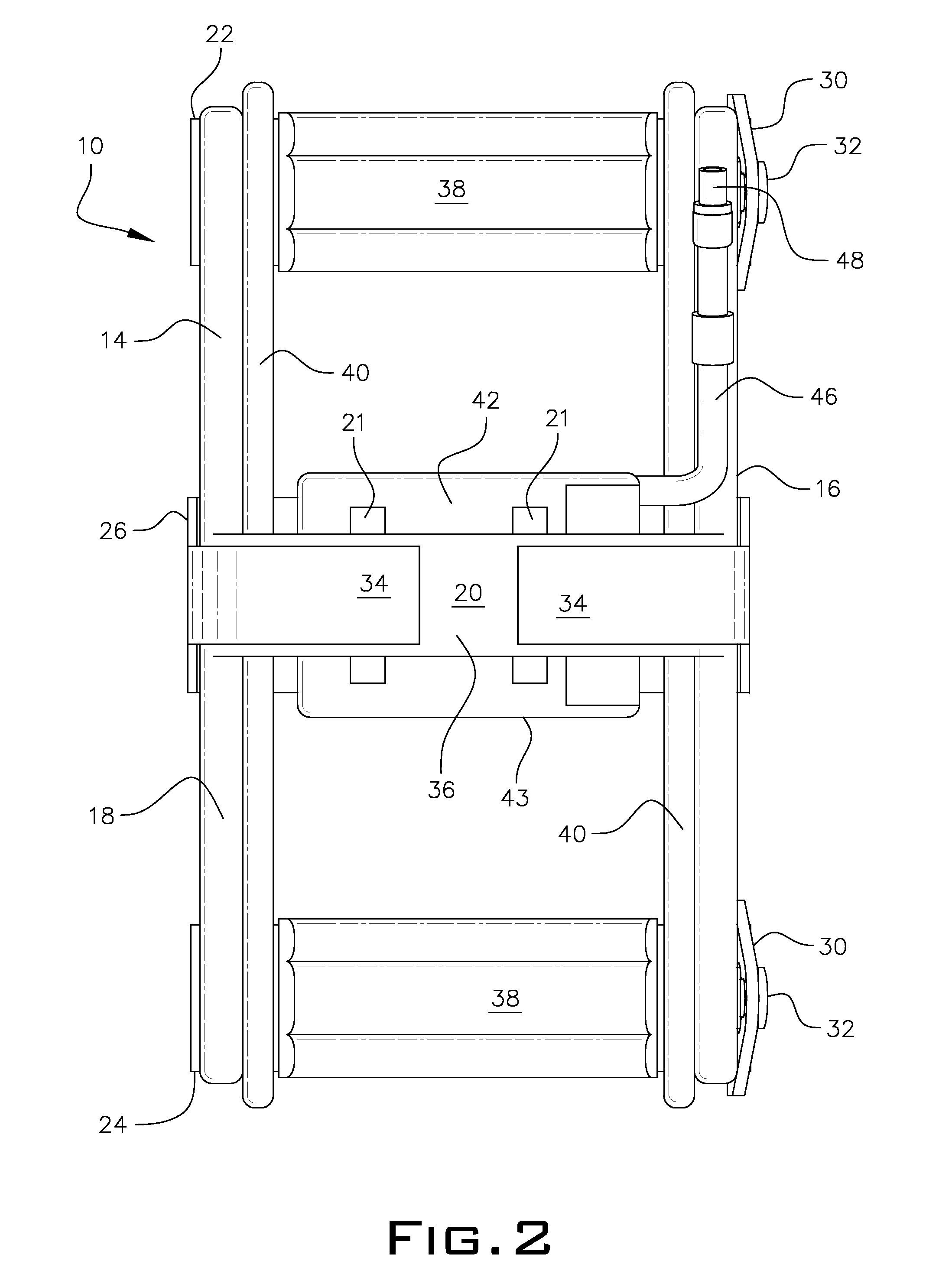Hyperextension knee brace
a knee brace and hyperextension technology, applied in the field of knee orthosis devices, can solve the problems of increased lateral trunk displacement, normal gait, and increased energy consumption while walking, and achieve the effect of optimizing knee support and control, reducing patient exertion, and improving comfor
- Summary
- Abstract
- Description
- Claims
- Application Information
AI Technical Summary
Benefits of technology
Problems solved by technology
Method used
Image
Examples
Embodiment Construction
, contained herein below, may be better understood when accompanied by a brief description of the drawings, wherein:
[0015]FIG. 1 is a front elevational view of the novel hyperextension knee brace of the present invention shown to be employed on a knee of a patient suffering from genu recurvatum;
[0016]FIG. 2 is a rear elevational view of the hyperextension knee brace of the present invention;
[0017]FIG. 3 is a left elevational view of the hyperextension knee brace of the present invention;
[0018]FIG. 4 is a right elevational view of the hyperextension knee brace of the present invention;
[0019]FIG. 5 is a top plan view of the hyperextension knee brace of the present invention;
[0020]FIG. 6 is a bottom plan view of the hyperextension knee brace of the present invention;
[0021]FIG. 7 is a front perspective view of the hyperextension knee brace of the present invention; and
[0022]FIG. 8 is a rear perspective view of the novel hyperextension knee brace of the present invention.
DETAILED DESCRIP...
PUM
 Login to View More
Login to View More Abstract
Description
Claims
Application Information
 Login to View More
Login to View More - R&D
- Intellectual Property
- Life Sciences
- Materials
- Tech Scout
- Unparalleled Data Quality
- Higher Quality Content
- 60% Fewer Hallucinations
Browse by: Latest US Patents, China's latest patents, Technical Efficacy Thesaurus, Application Domain, Technology Topic, Popular Technical Reports.
© 2025 PatSnap. All rights reserved.Legal|Privacy policy|Modern Slavery Act Transparency Statement|Sitemap|About US| Contact US: help@patsnap.com



